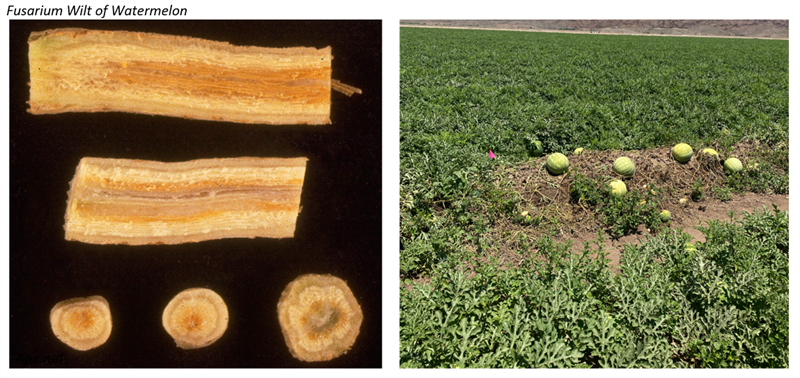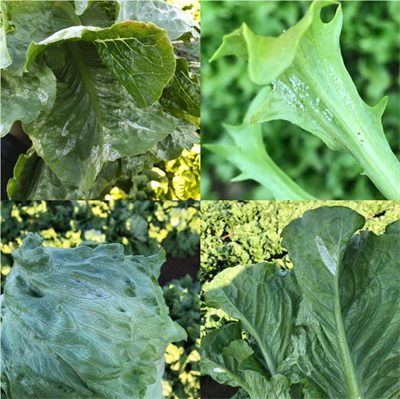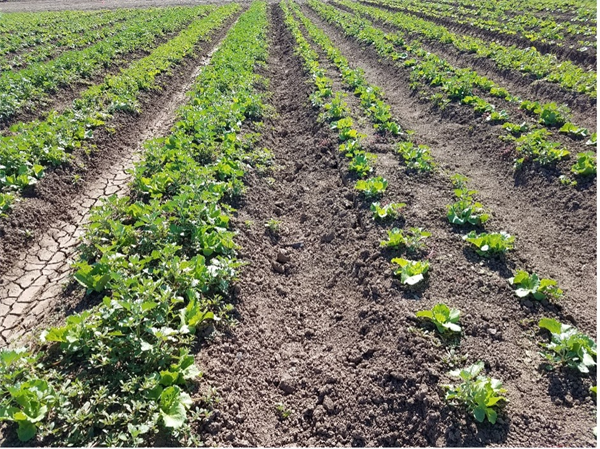Mar 24, 2021
Wrapping Up 2020/2021 Growing Season
It is that time of the year! Every year, September starts with “Is it April yet?” If you did not say that, then you cannot sit with us!
This past growing season has been an interesting one. From wearing masks at 120 degree to maintaining social distancing; while producing same amount of produce, feeding same amount of people, and dealing with same amount of disease and pests. A big thank you to everyone involved in agriculture for your hard work and perseverance.
In regards to plant health, we had plenty of disease problems to deal with this year. Below is brief report of the major diseases observed in growing season 2020/2021 and the disease we should be keeping an eye on for next growing season.

We observed a lot of fields with fusarium wilt this year. We had a lot of infected watermelon fields from Winterhaven to Yuma, Wellton, and Mohawk Valley. Rain, and overwatering of fields when plants set fruits might have contributed to the disease development.
Disease management include planting clean seeds/transplants, use of resistant cultivars, crop rotation, soil fumigation, soil solarization, grafting, biological control. An integrated approach utilizing two or more methods is required for successful disease management.
Fusarium wilt of Lettuce
Though detected in a lot of fields and some new fields, the disease pressure in lettuce was relatively low. Please continue with proper management practice for next growing season. Avoid overwatering, add soil amendments/organic matter, practice crop rotation if possible.
Lettuce dieback associated virus

Lettuce dieback is a soil-borne disease caused by two closely related viruses from the family Tombusviridae Tomato Bushy Stunt Virus (TBSV) and Lettuce Necrotic Stunt Virus (LNSV) that has been reclassified as Moroccan Pepper Virus (MPV). The disease has been observed throughout the main lettuce producing areas of California and Arizona.
Sclerotinia drop

Sclerotinia rot (known as lettuce drop) is caused by fungi Sclerotinia sclerotiorum and Sclerotinia minor.The initial aboveground symptom is observed as wilting of outermost layer of leaves giving an impression of stress in plants. However, as infection progresses rapidly towards other leaf layers and the entire plant wilts including the head. The entire plant/planting can collapse within the matter of 2 days when the condition is favorable. Management practices include use of subsurface drip irrigation, keeping the top 5-8cm of soil on planting bed is crucial. Deep plowing, crop rotation with non-hosts like small grains and broccoli, removal of infected plant tissue from the field etc. help reduce the inoculum level. Soil fumigation is effective though may not be economical. In Florida growers flood fallow their lettuce field for 4-6 weeks in summer which has almost 100% control of S. sclerotiorum. This is something you might wan to consider doing this summer if you have had high disease pressure in your fields this growing season.
Downy mildew

Downy mildew has been a problem for years in lettuce as well as spinach. One of the main reason that hinders the disease management is the complexity of the pathogen. Bremia lactucae (lettuce pathogen) consists of multiple races (pathotypes), and new races continue to occur as pathogen evolves. The pathogen is one of the fastest evolving plant pathogen. And each pathotypes have developed insensitivity to fungicides to different extent. Resistant cultivar, preventative application of fungicides are effective to some extent. Reducing leaf wetness and humidity by using drip or furrow irrigation can be helpful.
Impatiens necrotic spot virus (INSV)

INSV has been detected in a number in fields mostly in Tacna/Roll/Wellton area. It has been found in lower numbers in Gila Valley. If your field has been infected with INSV this growing season, be proactive next season in regards to clearing up the weeds, managing thrip population etc. If you see symptomatic plants please let me or Dr. Palumbo know.
This week in Clinic
If you haven’t submitted your entry for Melon powdery mildew fungicide trial for this spring please send it to Dr. Bindu Poudel-Ward (bpoudel@arizona.edu)














